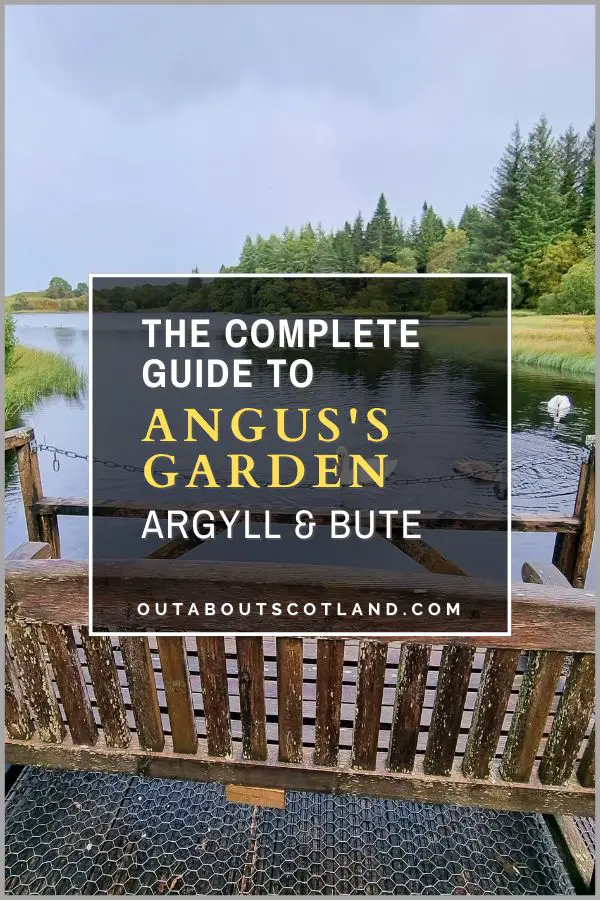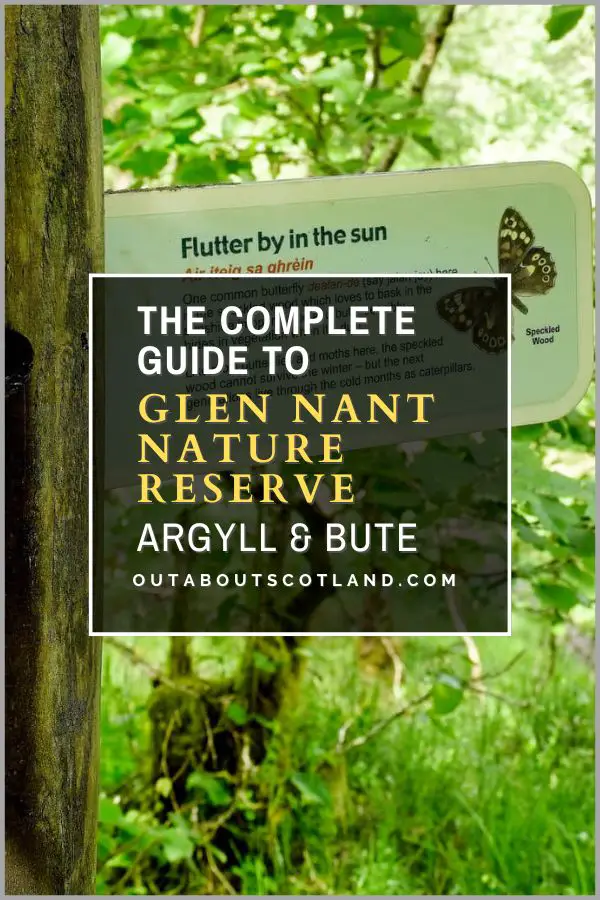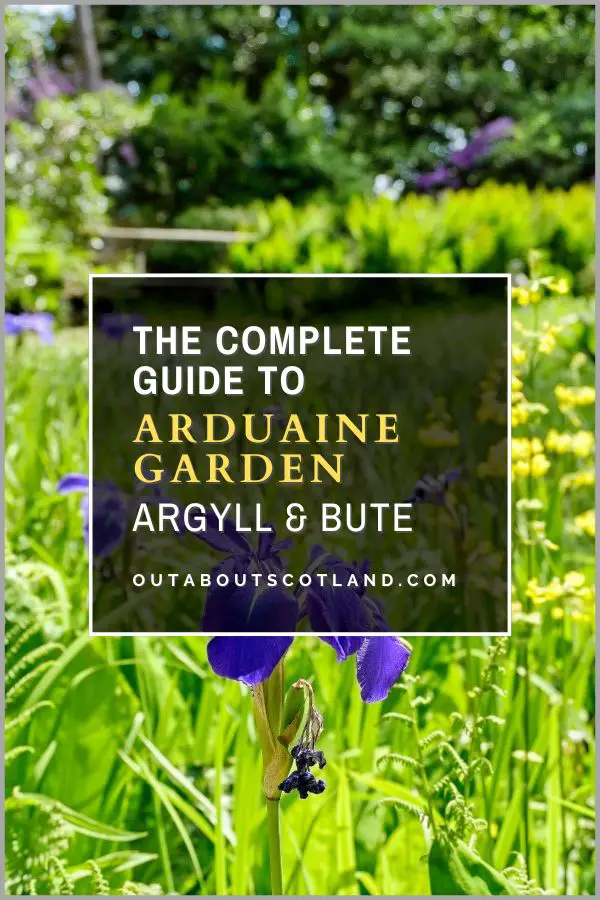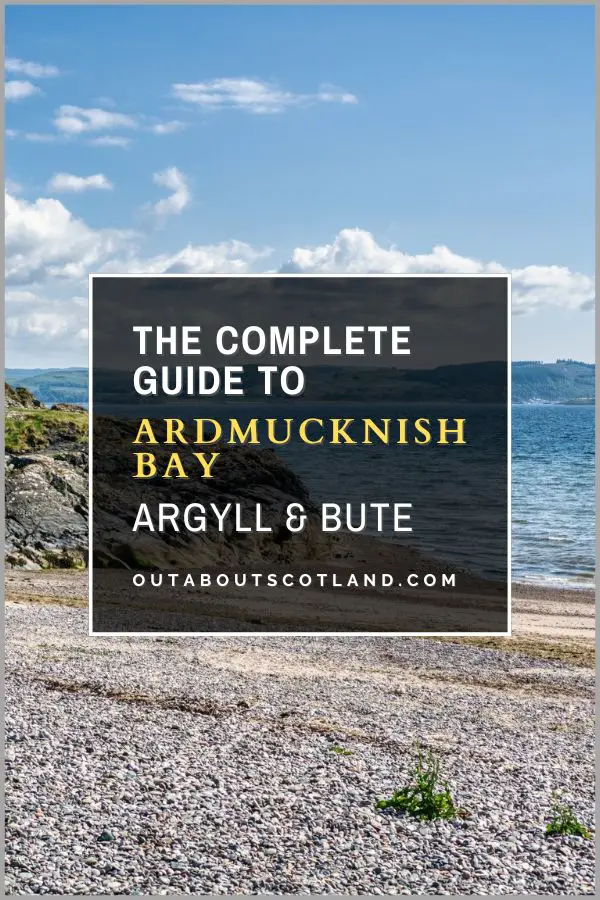Nestled in the rolling hills of Scotland’s most scenic region, Argyll & Bute is a family-friendly destination with attractions that are suitable for all ages. From stunning lochs and sandy beaches to ancient castles and woodland walks, the region is a paradise for families looking to get away from the hustle and bustle of everyday life.
In this guide, you’ll find a hand-picked selection of historic sites and scenic walks that will be enjoyable for every family member. Get ready to explore some of Scotland’s most beautiful scenery and create memories that will last a lifetime.
Loch Lomond
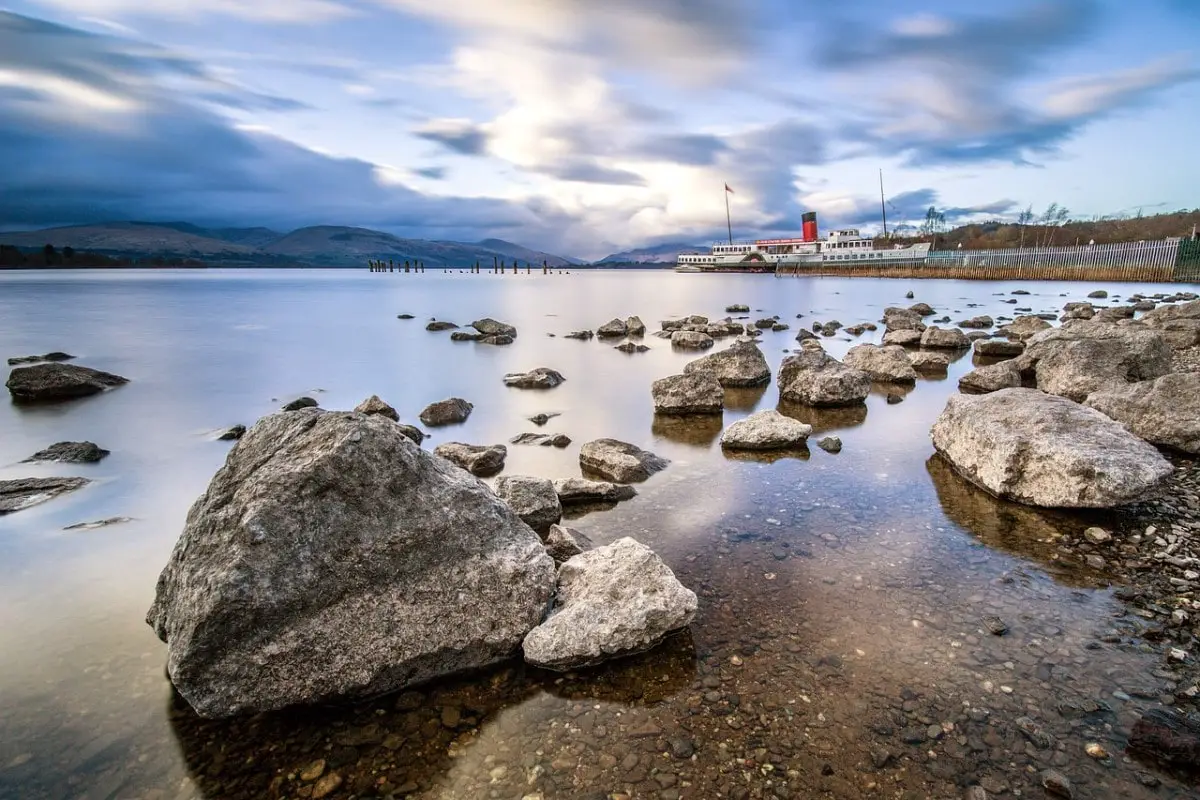
| Address: | Balloch: Alexandria G83 8QP Balmaha: Glasgow G63 0JQ Luss: Alexandria G83 8PA Tarbet: Tarbet G83 7DE |
| Opening Hours: | Loch Lomond is accessible 24/7 365 days a year. |
| Admission Price: | N/A |
| Parking: | There are public car parks at: Inveruglas: Arrochar G83 7DP Tarbet Pier: Arrochar G83 7DG Firkin Point: Arrochar G83 7DL Luss: Alexandria G83 8PA Balloch: Alexandria G83 8QP Balloch Country Park: Balloch G83 8LX Balmaha: Glasgow G63 0JQ Ben Lomond: Glasgow G63 0AR |
| Contact: | N/A |
| Facilities: | Loch Lomond Shores: Disabled access, car park, cafes, public toilets, wheelchair hire, picnic benches, BBQ area, information centre. Balloch Country Park: Car park, toilets, play park, picnic benches. Luss: Car park, cafes, restaurants, shops, public toilets, picnic benches, information centre. Balmaha: Car park, play park, toilets, information centre. |
| Photos: | Virtual Tour |
Out About Scotland Guide: Loch Lomond
If you’re looking for things to do in Argyll and Bute, Loch Lomond is an obvious destination. On par with Loch Ness and Ben Nevis in terms of fame, but more popular than either in terms of tourist numbers, this is one of the country’s most visited attractions.
More than four million people visit Loch Lomond every year, and over a million of them stop at Loch Lomond Shores in Balloch alone. So, what exactly is it about this loch that draws so many sightseers?
Its proximity to major cities is one of its main draws, as the southern end can be reached in about 30 minutes from Glasgow and 45 minutes from Stirling. The majestic Ben Lomond to the east, the Arrochar Alps, and the Glen Striddle Hills to the west are just a few examples of the stunning scenery that surrounds Loch Lomond.
Highlights include the RSPB reserve at Gartocharn on the A811 which is an excellent spot for birdwatching (see my binocular reviews), but it’s also a good place to see red squirrels and otters due to its mix of forest and wetland habitats.
Those who aren’t wildlife enthusiasts can spend their time on the water instead, either on a tour boat or with their own canoes, paddleboards, or kayaks.
Thanks to Loch Lomond’s ferry services, pleasure cruises can be started from almost all of the villages surrounding the loch. Luss (coming up next) is the best place to start, in my opinion, but you won’t go far wrong if you leave from Tarbet, Inversnaid, Rowardennan, Balloch, or Balmaha.
Protect Your Family From Scotland's Biting Midges
- Powerful, reliable protection for up to 8 hours
- Water- and sweat resistant
- Repels midges, mosquitoes, horse flies, sand flies, fleas and ticks
- Safe for use on adults, children over 30 months and pregnant women
- Non-sticky, moisturising with a pleasant fragrance
- Packaging may vary
Luss
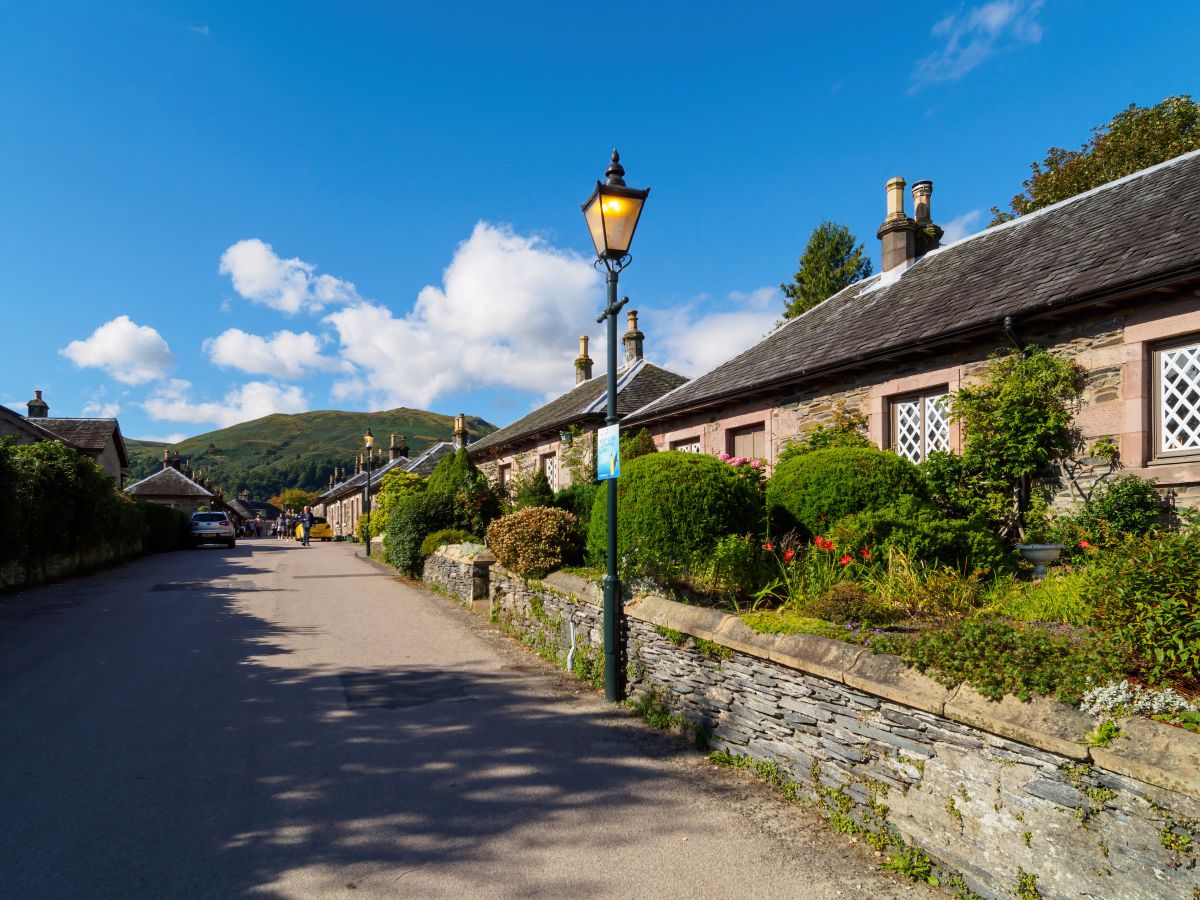
| Address: | Luss, Alexandria, G83 8PG |
| Opening Hours: | Luss is accessible 24/7, 365 days a year. |
| Admission Price: | N/A |
| Parking: | There are two paid car parks in Luss. Luss Visitor Centre (postcode G83 8PG) and Luss South (postcode G83 8NY). |
| Contact: | N/A |
| Facilities: | Luss has public toilets, cafes and restaurants, pubs, hotels, a petrol station, a campsite, a visitor centre, and convenience stores. |
| Photos: | Virtual Tour |
Out About Scotland Guide: Luss
Loch Lomond is one of Scotland’s most popular destinations and is a visual treat for visitors to the country’s southwest region. In addition to being Scotland’s largest loch, Loch Lomond is surrounded by stunning landscapes as well as a number of pretty villages.
Because it was used as the setting for the Scottish television series Take the High Road and is also the gateway to the numerous islands of Loch Lomond, Luss is the most well-known of these villages.
Luss is armed with all of the facilities needed to maintain its status as one of the most popular tourist destinations in the Trossachs, including a visitor centre, gift shops, and cafés. In addition, there are two large, paid car parks located to the north and south of the village.
The existence of a variety of tour companies that offer visitors the chance to partake in activities like off-road 4×4 driving, speed boat trips, and quad bike tours contributes significantly to the village’s appeal as a tourist destination.
Other highlights of Luss include Pier Road which is lined with charming stone cottages that display elaborate flower arrangements, and a long, golden beach that features a pier where you can join cruise boats that regularly set sail for trips around the loch.
Luss parish church, with its beautiful Scots pine roof, is also worth a visit, as is the cemetery which is home to the Hogback Stone, one of the most unusual gravestones in Scotland which is believed to have Viking origins. Other attractions in Luss include a lochside path, a historical centre honouring Clan Colquhoun, and a fairy trail that leads youngsters on an adventure through a magical woodland.
Bonawe Iron Furnace
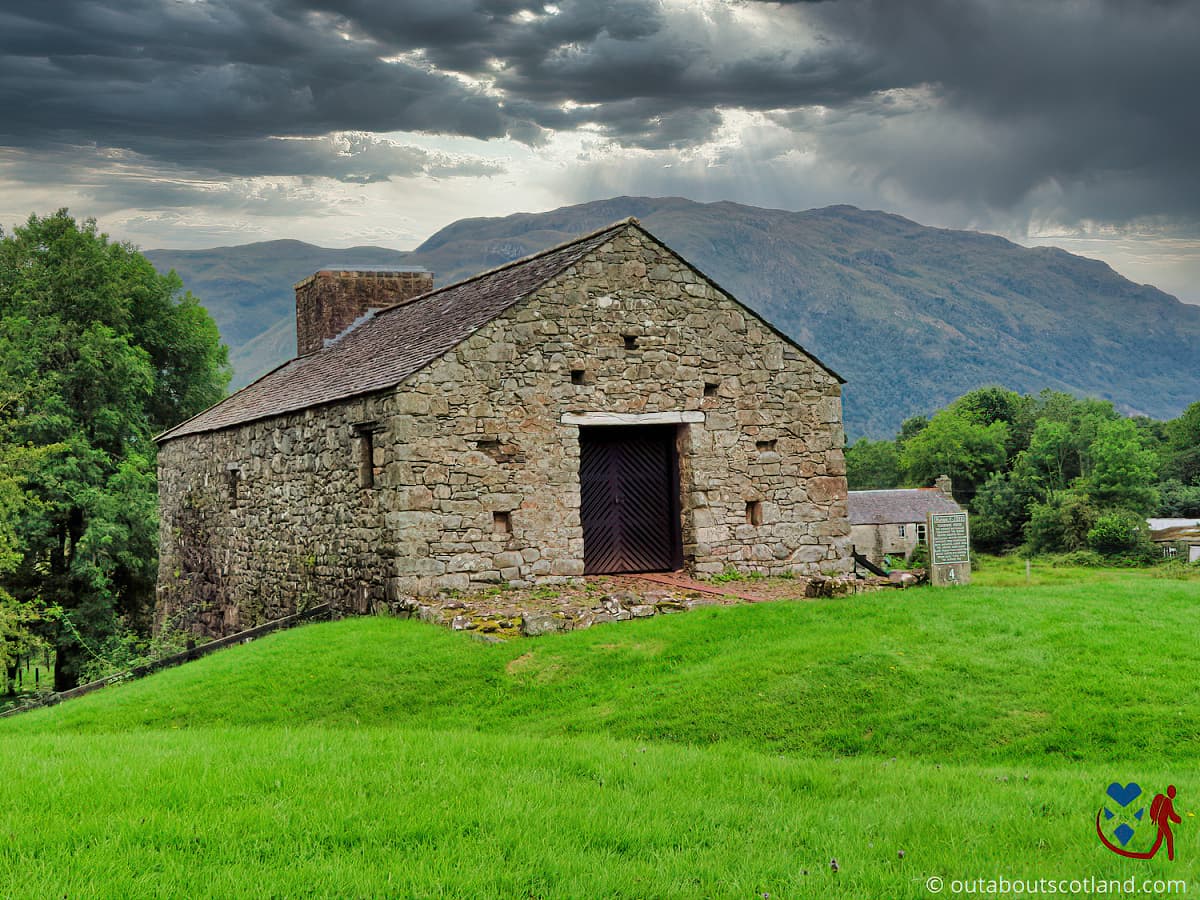
| Address: | Taynuilt, Argyll, PA35 1JQ |
| Opening Hours: | 1 Apr to 30 Sept: Daily, 10 am to 4 pm 1 Oct to 31 Mar: Closed |
| Admission Price: | Adult: £6 Child: £3.60 Concession: £4.80 Family (1 adult, 2 children): £12 Family (2 adults, 2 children): £17 Family (2 adults, 3 children): £20.50 |
| Parking: | Free car park on-site |
| Contact: | 01866 822 432 |
| Facilities: | Shop, toilets, water refill |
| Photos: | Virtual Tour YouTube Video |
Out About Scotland Guide: Bonawe Iron Furnace
Bonawe Iron Furnace is a historic attraction near Loch Etive in Argyll & Bute. Built in the 17th century, this charcoal-fired furnace was one of the largest producers of iron in Britain and was in operation until 1876, after which it was abandoned until Historic Environment Scotland took over and brought the site back to its former glory.
During a visit you can explore the blast furnace, ruined chimney stack, ironworks buildings and workers’ cottages, all of which provide an insight into what life was like back when the furnace was in full production more than 250 years ago.
There’s more to Bonawe Iron Furnace than first meets the eye, so be sure to take a good wander around the grounds to check out every building. The blacksmith shop and other workshops have been painstakingly restored to their original appearances, and visitors can watch demonstrations of how the furnace worked to get a better understanding of how the ironworks operated.
There’s also a visitor centre where you can find out more about the site’s history and hear the tales of the people that used to work there. The visitor centre has undergone extensive renovations in recent years, and it now offers interactive displays and activities that are great for schools, clubs, and families interested in learning more about this time in Scotland’s past.
When you’re ready to move on, you might like to explore the surrounding area to appreciate its spectacular scenery on numerous trails that offer stunning views of Loch Etive, Ben Cruachan, and other local attractions.
Book Tours in Scotland
Dunstaffnage Castle
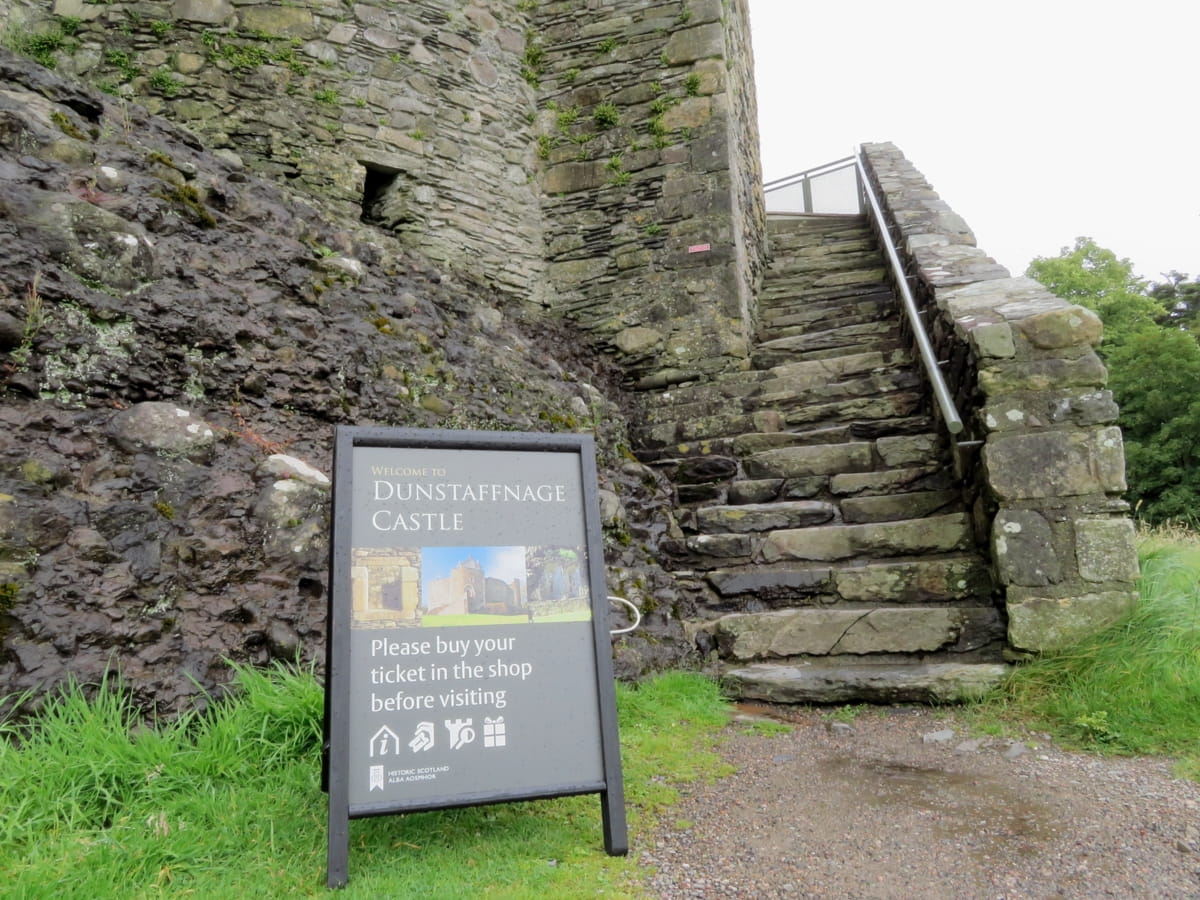
| Address: | Dunbeg, Oban, PA37 1PZ |
| Opening Hours: | 1 April to 30 September: Daily, 9.30 am to 5.30 pm Last entry 5 pm 1 October to 31 March: Daily, 10 am to 4 pm, except for Thursday and Friday Last entry 3.30 pm |
| Admission Price: | Adult (16-64yrs) £7.00 Concession (65yrs+ and unemployed) £5.50 Child (5-15yrs) £4.00 Family (1 adult, 2 children) £14.00 Family (2 adults, 2 children) £20.00 Family (2 adults, 3 children) £24.00 |
| Parking: | Free car park on-site |
| Contact: | 01631 562 465 |
| Facilities: | Shop, toilets, drinks machine, visitor centre |
| Photos: | Virtual Tour YouTube Video |
Out About Scotland Guide: Dunstaffnage Castle
If you’re looking for a unique and interesting destination in Argyll and Bute, look no further than Dunstaffnage Castle. This massive castle in the southwest of Scotland is a good place to discover the rich heritage of Argyll and the Hebrides, enjoy stunning scenery, and learn more about the culture of Scotland.
Duncan MacDougall, Lord of Lorn, originally constructed Dunstaffnage Castle in the 13th century as a stronghold for the MacDougall family. Over the years, it passed into the ownership of the Campbells of Argyll and served as a jail, a military outpost, and a royal stronghold.
Today, the castle is managed by Historic Environment Scotland and is open to the public for self-guided tours. There are two towers, a great hall, and a number of rooms, including a dining room and a kitchen, in Dunstaffnage Castle, and all have been meticulously restored to their former glory.
The fortress’s massive curtain wall – which is one of the oldest in Scotland – encloses a grass courtyard with steps that lead up to a platform with fabulous views across Ardmucknish Bay and a woodland that has a secret chapel hidden away in the trees.
The castle also hosts a range of events throughout the year, including performances and reenactments of battles, as well as outdoor movie screenings and live music performances. Entry is by ticket only, but getting in is free for Historic Environment Scotland members.
Inveraray Castle
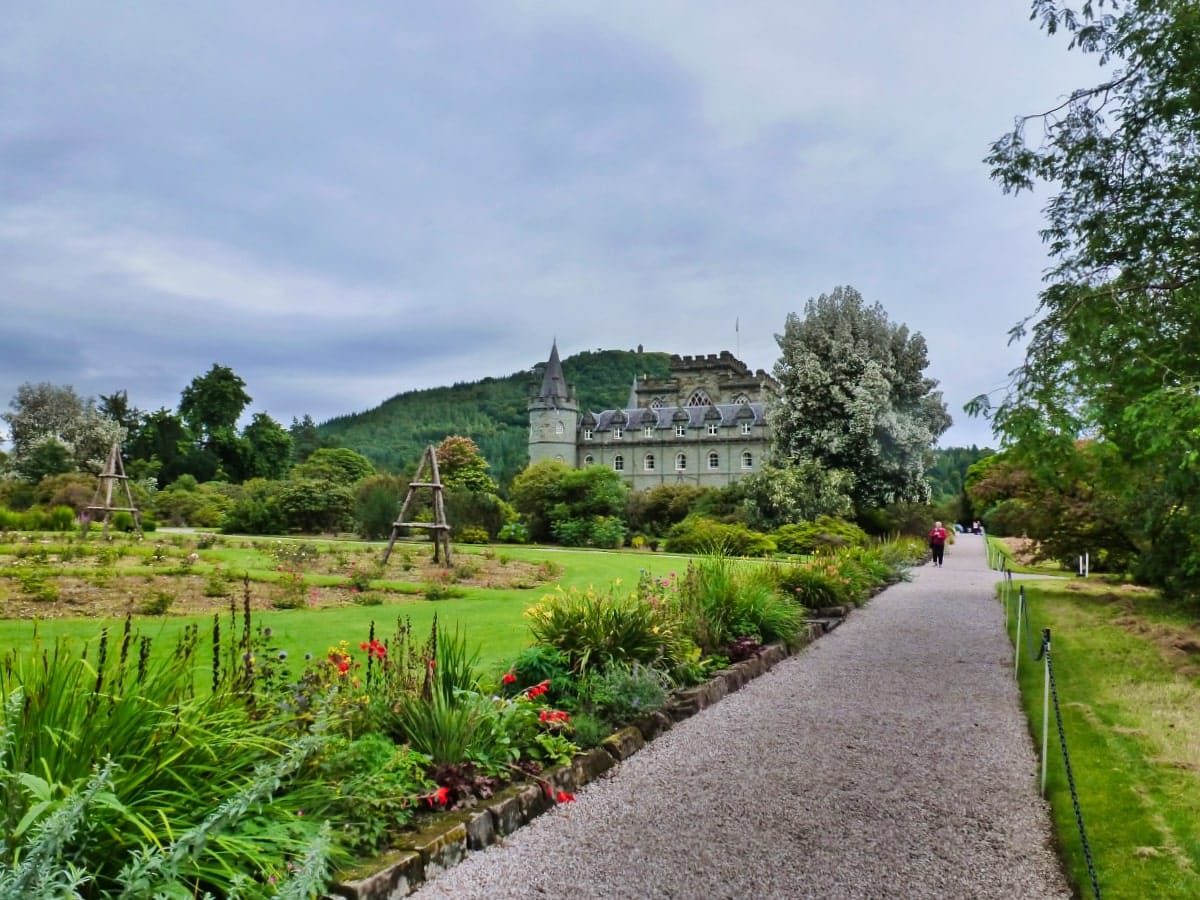
| Address: | Inveraray, Argyll, PA32 8XE |
| Opening Hours: | Thursday to Monday (closed to the general public on Tuesday & Wednesday) Pre-booked groups welcome Tuesday and Wednesday (min group charge of 20) - must be guided by you or one of our guides. 28th March - 30th September 10:00 - 17:00 1st October – 28th October 10:00 - 16:00 |
| Admission Price: | Individual Pricing (<20) Adult: £16.50 pp Senior: £14.50 pp Student: £14.50 pp Children 5-15: £12.00 pp Children Under 5: Free Family Ticket (2 Adult & 3 Children): £55.00 Private Guide per group: £55.00 (max 19 pax) Garden Only: £9.00 pp Blue Badge holders & carer: Free Group Pricing (20-45 MAX) Adult: £14.00 pp Senior: N/A Student: N/A Children 5-15: £9.00 pp Children Under 5: Free Family Ticket (2 Adult & 3 Children): N/A Private Guide per group: £25.00 (20-45) Garden Only: £9.00 pp Blue Badge holders & carer: Free |
| Parking: | Free car park on-site for ticket holders |
| Contact: | 01499 302203 |
| Facilities: | Toilets, cafe, gift shop, walking routes, partial disabled access, guided tours |
| Photos: | YouTube Video |
Out About Scotland Guide: Inveraray Castle
Inveraray, the mediaeval county town of Argyll, is home to the majestic Inveraray Castle on the banks of Loch Fyne. The Duke of Argyll and the Chiefs of Clan Campbell have resided in the castle since the late 14th century, but it is now one of Argyll and Bute’s top tourist destinations.
In addition to being a stunning building, Inveraray Castle is home to extensive collections of historical artefacts including swords and armour, silverware, and furniture. Highlights include the state dining room, which features a collection of elaborate paintings and silverware, and the armoury hall, which boasts the highest ceiling of any building in Scotland at an incredible 21 metres.
Visitors have access to a wide range of activities and facilities while they’re at Inveraray Castle. These include both guided and self-guided tours of the castle and its grounds, as well as an interactive exhibition where they can learn about the history of the castle and the Campbell family, who have lived there for almost 500 years.
In addition, it’s possible to explore the lovely grounds which feature a sunken garden and a romantic walled garden as well as two acres of flowerbeds and 180 hectares of woodlands and parkland. The castle estate also hosts an annual Highland Games, has a caravan park, several holiday houses, and is a filming location (the castle featured in Downton Abbey).
Inveraray Castle offers a truly unique experience for visitors. With its impressive architecture, fascinating artefacts, and picturesque gardens, this historic attraction is a must-see destination for anyone visiting Argyll and Bute.
Protect Your Family From Scotland's Biting Midges
- Powerful, reliable protection for up to 8 hours
- Water- and sweat resistant
- Repels midges, mosquitoes, horse flies, sand flies, fleas and ticks
- Safe for use on adults, children over 30 months and pregnant women
- Non-sticky, moisturising with a pleasant fragrance
- Packaging may vary
McCaig’s Tower
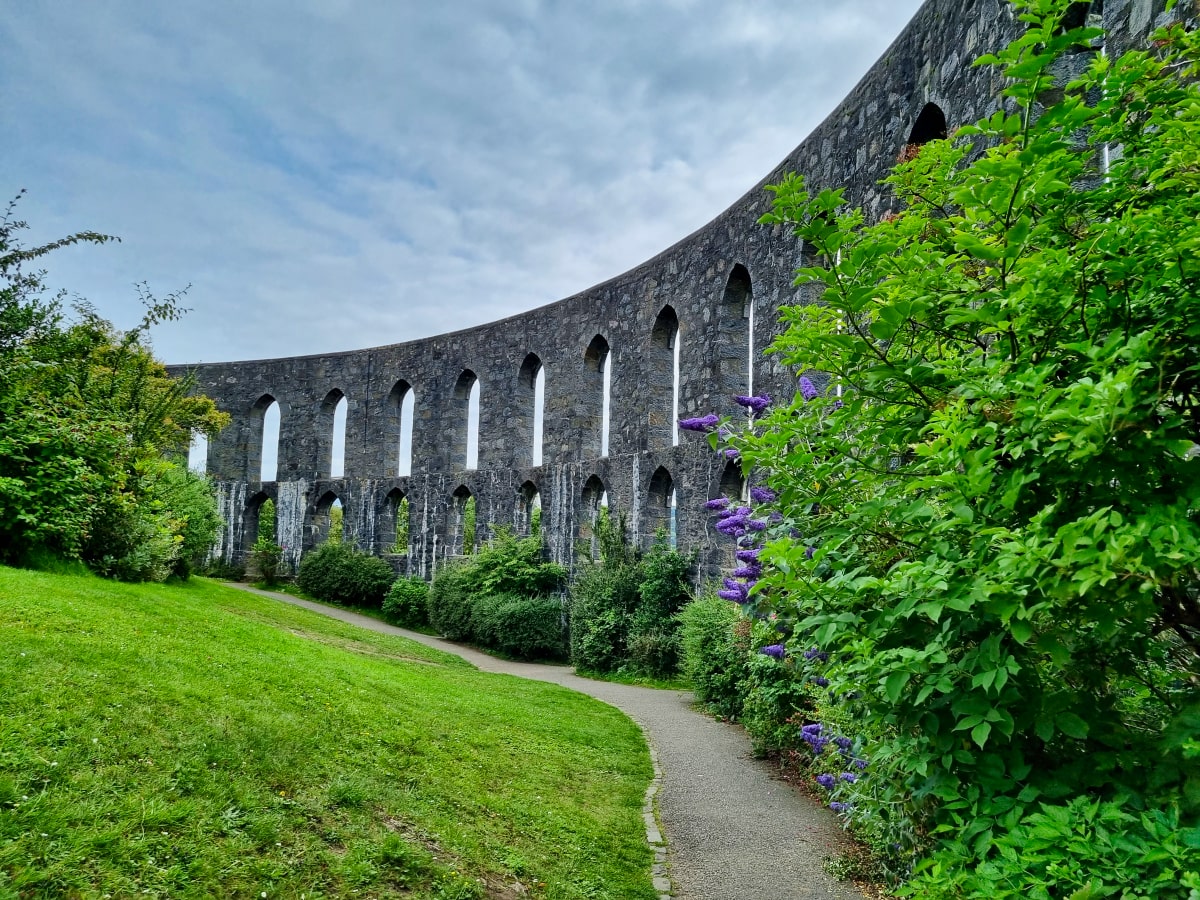
| Address: | Duncraggan Rd, Oban, PA34 5DP |
| Opening Hours: | 24/7 |
| Admission Price: | Free |
| Parking: | No on-site parking Free roadside parking and paid car parks in Oban |
| Contact: | N/A |
| Facilities: | None. Toilets, food and drinks available in Oban |
Out About Scotland Guide: McCaig’s Tower
If you’re looking for things to do in Oban, I recommend heading to the historic McCaig’s Tower. During the late 19th century, wealthy banker John Stuart McCaig constructed the tower on a hilltop overlooking the town as a memorial to his family and as a way of providing employment for the local townspeople.
The tower, often referred to as ‘The Colosseum of Oban’, is a unique structure made of local stone and built to resemble a classical Greek amphitheatre. With a circumference of 200 metres (650 feet) and featuring 94 archways, it’s certainly an impressive sight to behold.
Admittedly, there’s not a huge amount to do at this Victorian folly, but the views across Oban and Mull are worth the journey alone.
Walking there from the town centre takes around 10 minutes which makes it an ideal destination while waiting for a ferry, though visitors should take note that there’s no footpath for much of the route so it’s perhaps best to drive to the car park on Duncraggan Road (postcode PA34 5DT).
There are plenty of things for families to do near the tower once a visit is over. You might like to explore the heritage museum of Dunollie Castle which is a 6-minute drive to the north, or take a short walk around Oban Harbour to watch the ferries sail in and out while demolishing some of the town’s famous fresh seafood.
You can also take a boat trip around the Sound of Kerrara, sample a dram of whisky at the Oban distillery, and explore Oban’s rich cultural and historical heritage at the Oban War and Peace Museum. I think it’s fair to say that Oban is without a doubt one of the best towns in Argyll and Bute to visit with a family.
St. Conan’s Kirk
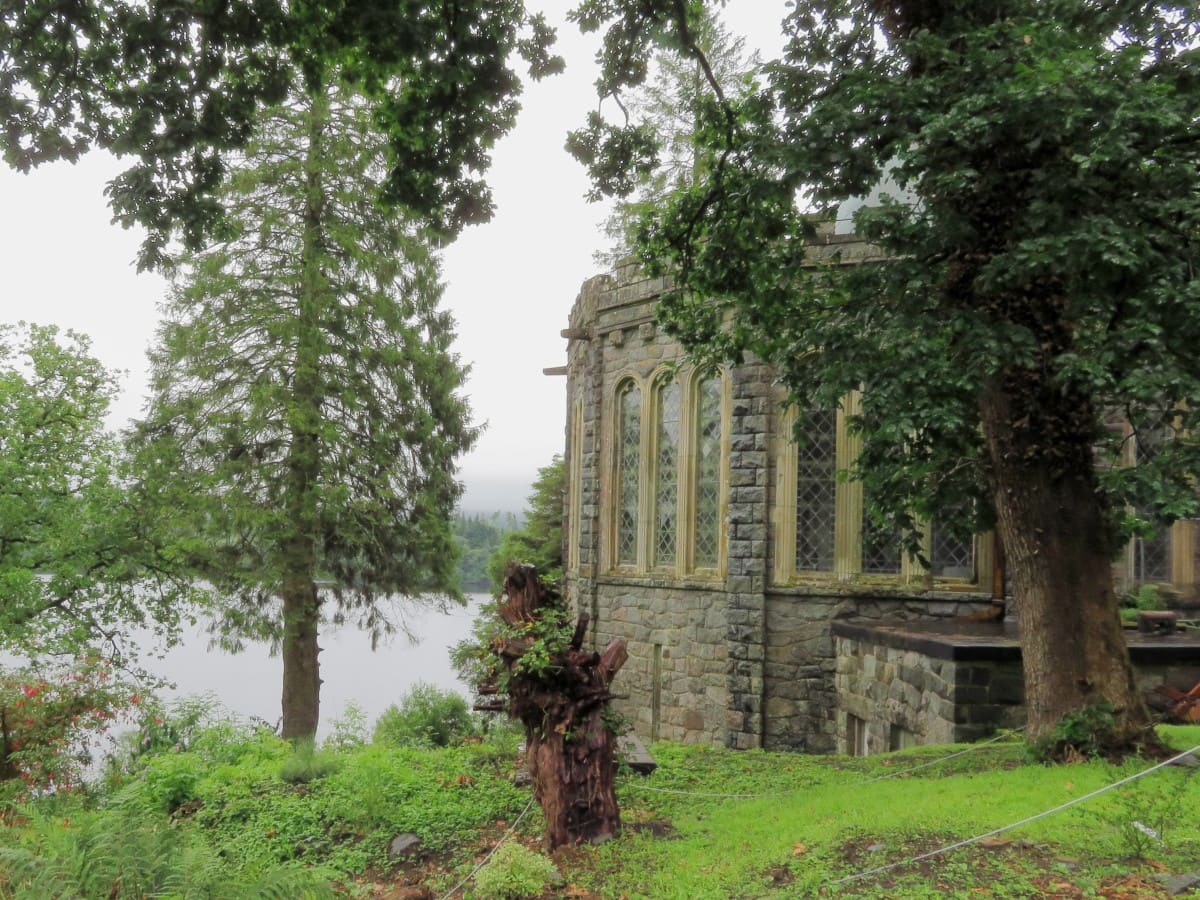
| Address: | Lochawe, Dalmally, PA33 1AQ |
| Opening Hours: | Summer (April to September) 8am – 6pm Winter (October to March) 9am – 5pm |
| Admission Price: | Free |
| Parking: | Free car park on-site Alternative car parking on roadside layby |
| Contact: | enquiries@stconanskirk.org.uk |
| Facilities: | Tearoom, guided tours |
| Photos: | Virtual Tour YouTube Video |
Out About Scotland Guide: St. Conan’s Kirk
St. Conan’s Kirk, located on the shores of Loch Awe, is generally recognised as one of the most beautiful places in the Scottish Highlands. The building looks much older than it is (it was actually built in the late 1800s), thanks to its Gothic buttresses and Roman-style arches, and it’s far prettier in appearance than most other kirks (churches) of the era.
The rear of the kirk is the perfect place for a photograph as it overlooks Ben Lui and the watery expanse of Loch Awe, and if you look in the middle of the loch, you’ll see the islands of Innishail and Innischonain,the latter being the family home of Clan Cambell, who built St. Conan’s Kirk
Step inside the building, and you’ll find a wealth of wonders waiting for you. The most spectacular sight is the concave chapel, surrounded by towering stone pillars and huge stained glass windows. It’s easy to see why St. Conan’s Kirk is often compared to the stunning Rosslyn Chapel in Midlothian, although unlike that ultra-popular tourist attraction, this one remains largely overlooked by sightseers.
Thanks to the trust that manages the kirk, it has been preserved in pretty much the same condition as when it was first built. There’s no entry fee, but there’s a donation box if you’d like to contribute towards the upkeep of the historic building.
Book Tours in Scotland
Ben Cruachan
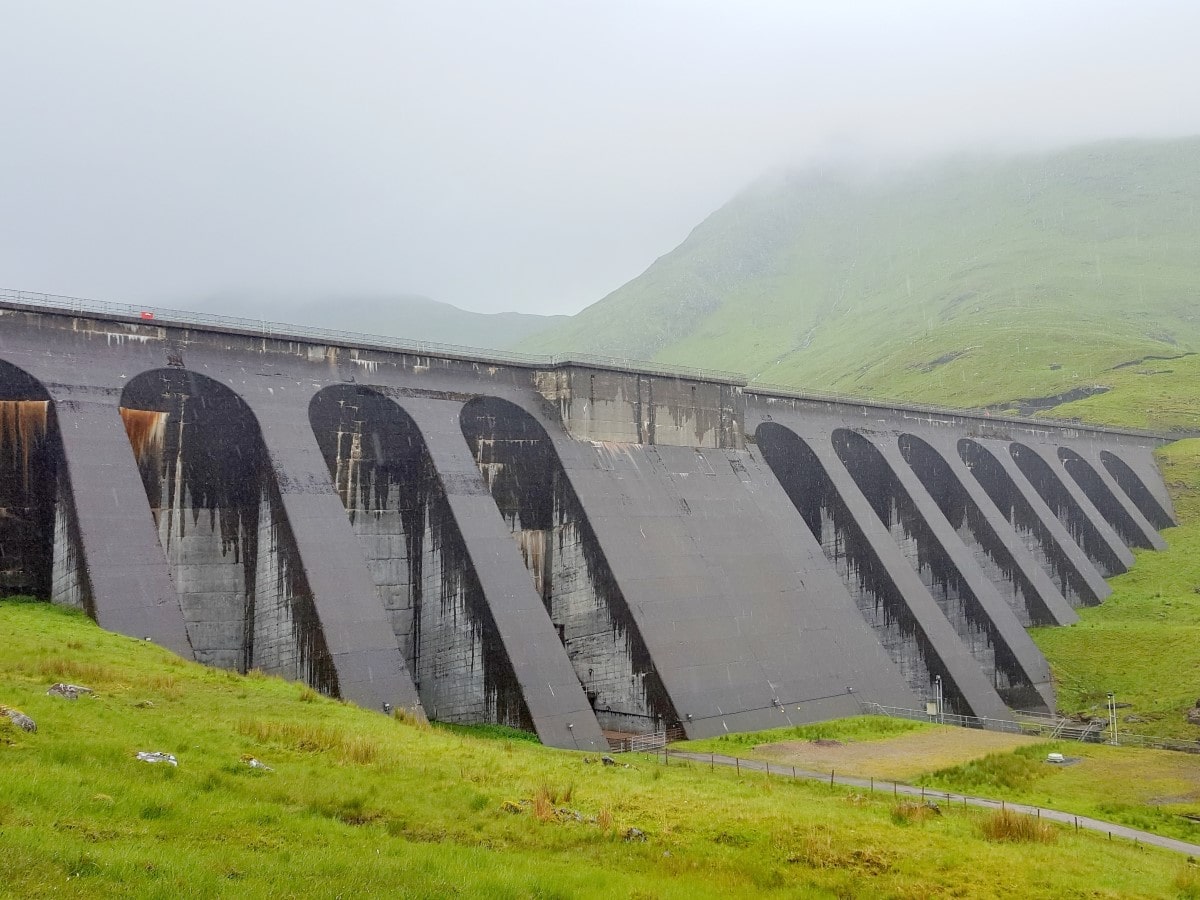
Out About Scotland Guide: Ben Cruachan
Ben Cruachan, a mountain that lies between lochs Awe and Etive, is notable for more than just its height (1,126 metres or 3,690 feet). In the first place, it’s the highest peak in Argyll and Bute, and second, it’s the location of a Scottish Electricity hydro-electric dam that supplies power to generators buried deep beneath the mountain.
Those who make the trek up Ben Cruachan, which is technically classified as a Munro, will be rewarded with some of the most breathtaking panoramas in the Southern Highlands, and unusually, it’s possible to walk a good part of it on a tarmac road. This road snakes its way to the man-made dam situated roughly halfway up, which is an easy alternative for those who don’t want to climb the entire mountain.
In contrast to the untamed background of Ben Cruachan, the dam has a rather dreary industrial appearance, yet the body of water inside it is nothing short of spectacular on a sunny day. Visitors are not permitted to swim in the reservoir, however, despite how inviting it looks.
Heading back to the A85 at the foot of Ben Cruachan, you might like to take a tour of the visitor centre where you can explore the subterranean tunnels beneath the mountain and marvel at the enormous turbines that are powered by the reservoir hundreds of feet above.
The Hollow Mountain attraction has a museum, toilets, a cafe, and a gift shop, so it’s worth popping into if you have children with you as there are very few other facilities in the area.
Glen Loin
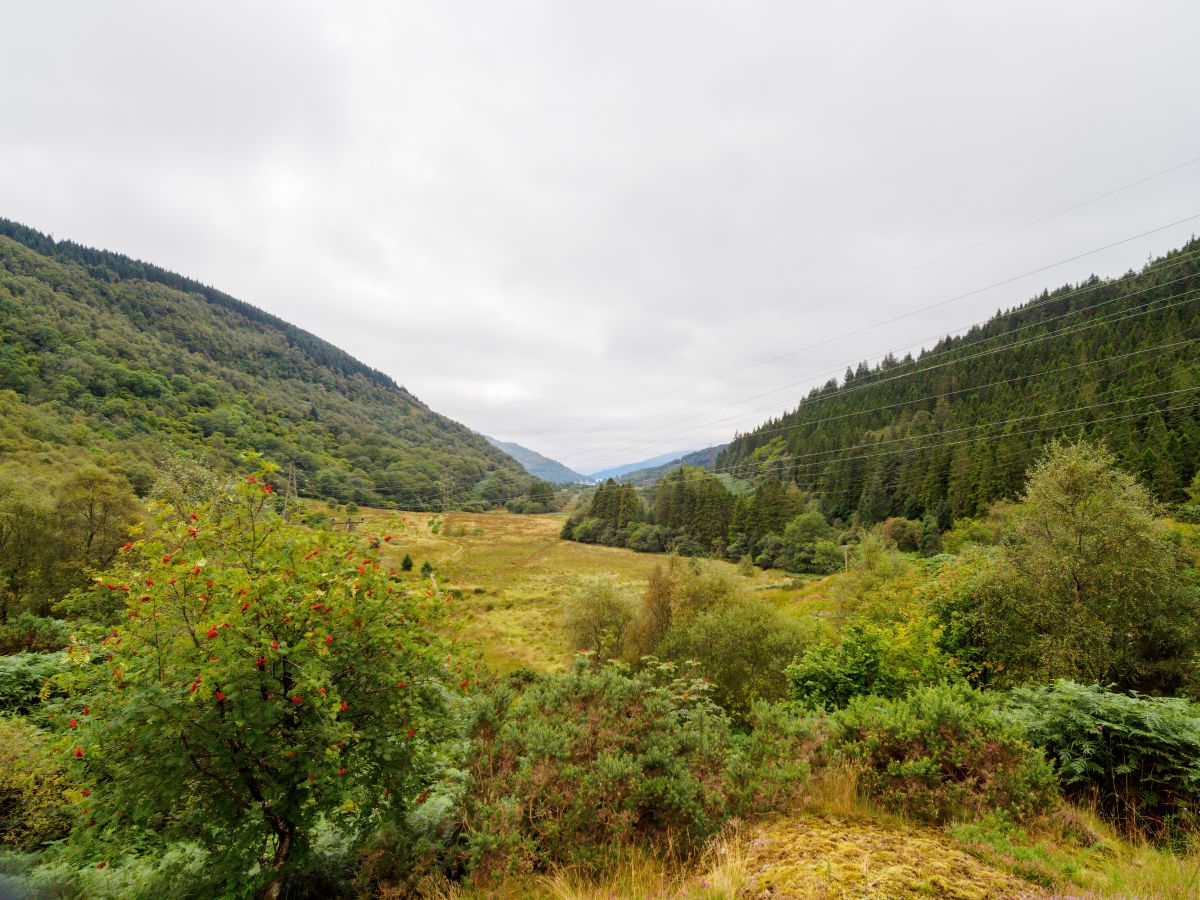
Out About Scotland Guide: Glen Loin
The Arrochar Alps are a beautiful mountain range located close to the villages of Arrochar and Lochgoilhead, not far from lochs Goil and Long and to the west of Loch Lomond. The peaks of Ben Vorlich, Ben Vane, and Ben Arthur, commonly known as The Cobbler, are popular destinations for climbers that come to this area, while hikers have the opportunity to explore the picturesque glens of Core, Glenbranter, and Loin.
Glen Loin, in particular, offers a wonderful opportunity for a relaxing walk thanks to a route that winds its way towards Loch Sloy, where visitors can take in breathtaking views of the Scottish countryside.
The trail around the glen runs for 11 miles, so it’s certainly on the upper end of what’s suitable for families, but despite this, the path is kept in good condition, so it’s easy to complete for just about any fitness level.
The journey starts and finishes in Arrochar, a village situated on the northern end of Loch Long, which has two car parks and a range of facilities, including a petrol station, cafes, hotels, and convenience stores. The trail is circular, but the western side is by far the most popular as it provides access to Beinn Narnain and The Cobbler and has a wide and level gravel path that’s great for cycling.
The path heading through Glen Loin, meanwhile, is much narrower and consists of slippery, muddy terrain that will be difficult for all but the toughest mountain bikers, though anyone on foot will find it fairly easygoing.
At the far northern end of the trail, you’ll find Allt Coiregrogain and Inveruglas Water, the latter of which flows into Loch Sloy and its towering dam. The dam adds an additional two miles to the journey, but it is worth the extra time as the views are absolutely stunning at every step of the way.
Protect Your Family From Scotland's Biting Midges
- Powerful, reliable protection for up to 8 hours
- Water- and sweat resistant
- Repels midges, mosquitoes, horse flies, sand flies, fleas and ticks
- Safe for use on adults, children over 30 months and pregnant women
- Non-sticky, moisturising with a pleasant fragrance
- Packaging may vary
Frequently Asked Questions
What is Argyll and Bute known for?
Argyll and Bute is a beautiful and remote area of western Scotland that’s known for its rugged and unspoiled landscapes and rich history.
Popular attractions include Inveraray Castle and the town of Oban, outdoor activities such as hiking, fishing, and watersports, and numerous islands, lochs, and beaches. Easily accessible islands from the Argyll and Bute mainland include the Isle of Mull and the Isle of Islay.
Why visit Argyll and Bute?
Argyll and Bute is home to some of Scotland’s most stunning beaches and islands, as well as several historic stately homes and picturesque gardens, making it an ideal destination for a relaxing getaway. For those who prefer to get their blood pumping while on holiday, there are many trails that are perfect for hiking and biking, as well as lots of wildlife to watch.
The region is also home to the famous Loch Lomond and the Trossachs National Park which is a great place to explore for families, couples, and solo travellers alike. Popular attractions include Inveraray Castle, Kilmartin Glen, and Dunstaffnage Castle.
What are the top attractions to visit in Argyll and Bute?
If you’re looking for scenic landscapes and exciting outdoor pursuits, look no further than Argyll and Bute. The Queen’s View, Loch Lomond, Inveraray Castle, Benmore Botanic Garden, and Argyll Forest Park are just a few of the must-see locations in the region.
What are the most popular things to do in Argyll and Bute with children?
Outdoor enthusiasts of all ages will enjoy the scenic region of Argyll and Bute in Scotland. Walking and biking along miles of spectacular coastline is a common pastime, and tourists can also enjoy visiting the many museums, gardens, and castles in the region.
Two suggestions for places to take children are Rothesay Castle and Mount Stuart House and Gardens, both of which are on the Isle of Bute



